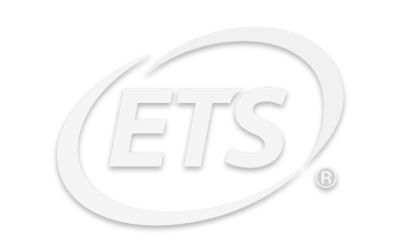Small Staff, Large Library Impact
Challenges

Tracking usage statistics

Request management and sharing

Multimedia capabilities

Eliminate dependence on IT department
Director of Library Services
SydneyEnterprise is used by one of the nation’s largest and most advanced behavioral healthcare organizations in the United States, with a unique model that integrates scientific and medical advancements with time-tested philosophies and compassionate engagement to provide practical, effective, and efficient care. “Knowledge” and “Learning” are two of the organization’s Core Values, and the library, located at the nonprofit’s headquarters is a key contributor to both.
The library provides organization-wide research on-demand for client care and programs, and supports product, curricular, and business development. The organization’s extensive array of services includes: acute care, treatment in residential settings, community-based living, special education day schools, foster care, autism assessments, employment and transition services, group homes, school and family consultation, traditional and therapeutic foster care, and outpatient/other specialized services. The organization serves children, adolescents and adults with emotional and behavioral and cognitive differences. In support of their mission, the small library team fills more than 2,000 research and information requests annually.
User Base
The organization employs more than 7,500 staff across 13 states, so the library has an extremely distributed and diversified user base. Psychologists, psychiatrists, therapists, behavioral analysts, and interns are both direct and indirect beneficiaries of the library’s services, while administrative and operational staff, along with teachers and educators, reach out to the library directly.
Going Digital, Working Virtually
In keeping with trends in special libraries, they are moving away from print, but of course, those resources are cataloged and available via their OPAC. The library has a collection of about 4,000 books and approximately 200 journal titles, making up more than 30,000 volumes and issues. In addition, the library licenses a wide variety of databases, together with hundreds of online serials subscriptions.
With a new CEO and senior leadership team, the need to focus on digital, portable resources to support the needs of users throughout the organization’s network became a strategic priority. When leaders evaluated the library management system, it became clear the library needed to migrate to SydneyEnterprise—and take advantage of its powerful functionality—in order to continue supporting the entire organization virtually.
IT Independence
When the library implemented SydneyEnterprise, the Library Director elected to move to Lucidea’s SaaS (software-as-a-service) option to avoid dependence on the IT department, and remove the need to manage a server. Per the Director, Lucidea’s technical services and help desk staff are “amazing”. She values “being able to call and speak with a real person,” saying it is one of the many reasons why she would never want to switch to another vendor. As for the migration to SydneyEnterprise, and the implementation (especially the Request Management module), it was “smooth and seamless”.
Demonstrable impact
The library uses SydneyEnterprise’s Request Management Module to easily share and collaborate on research and information requests. They also use its analytics capabilities to provide statistics that demonstrate the level at which users are accessing and leveraging library services, and to show the impact on the organization’s diversified activities. The dashboard was configured by a member of Lucidea’s Client Services team based on the client’s requirements. It enables the Library Director to provide—with just a few clicks—data for the monthly administrative staff meeting, such as number of requests, which centers they originated from, and the purpose of the research (e.g., client care, grant or RFP writing, project development, school work, special projects). The library began leveraging the module for statistics just before the end of the calendar year, but even two months’ worth of data was extremely helpful for the budget presentation—doing away with the spreadsheets the library had been using.
Mutual Benefit
From an efficiency standpoint, because the Request Module is integrated with email, library staff are alerted to new requests and can quickly respond. They save several hours per week by providing a link to the request database and enabling users to input their own requests; library staff no longer have to do the data entry. Users are perfectly happy to use the database, especially because it provides dropdown boxes and other workflow best practice functionality including pre-populated fields. Once a request is in their hands, the librarians do all searching and downloading, and email the results, whether as PDFs, spreadsheets, PPTs, or Word documents with synthesized content.
Employees are appreciative of the library services, and are “thrilled” with the online catalog since they now know what is available to them; per the Library Director, borrowing has increased “exponentially.” She considers SydneyEnterprise to be a marketing tool for the library. Because of the OPAC and the Request Management module, there is increased awareness of the library’s content and services throughout the organization, and access is even easier because there is a library link on the intranet.
The library handles about 115 research and information requests each month, but these increase around the time of important Board Meetings, when the library helps administrators report on various projects they are working on. Those requests are always last minute, but with SydneyEnterprise’s reporting and statistics, the Library Director can demonstrate visible, tangible results not just for the library, but for the various departments and projects it supports.
Onward and Upward
As is often the case when there is a change in senior leadership, the library’s future strategy was unclear a year ago. With a crowd-pleasing OPAC, full multimedia capabilities, a request management system that optimizes workflow, and the ability to generate statistics that send a powerful message, the library has now entered a new era of impact and senior level advocacy.





